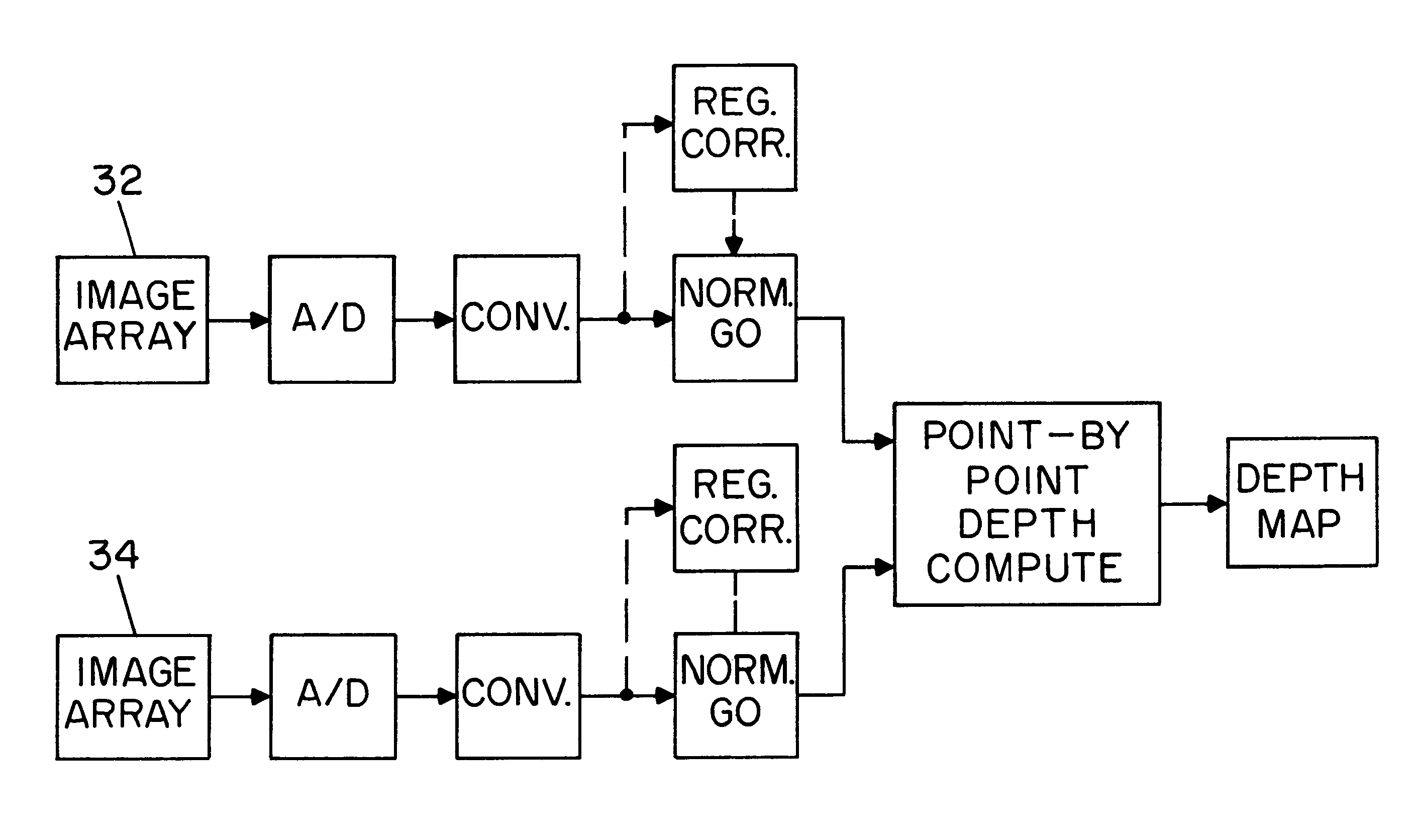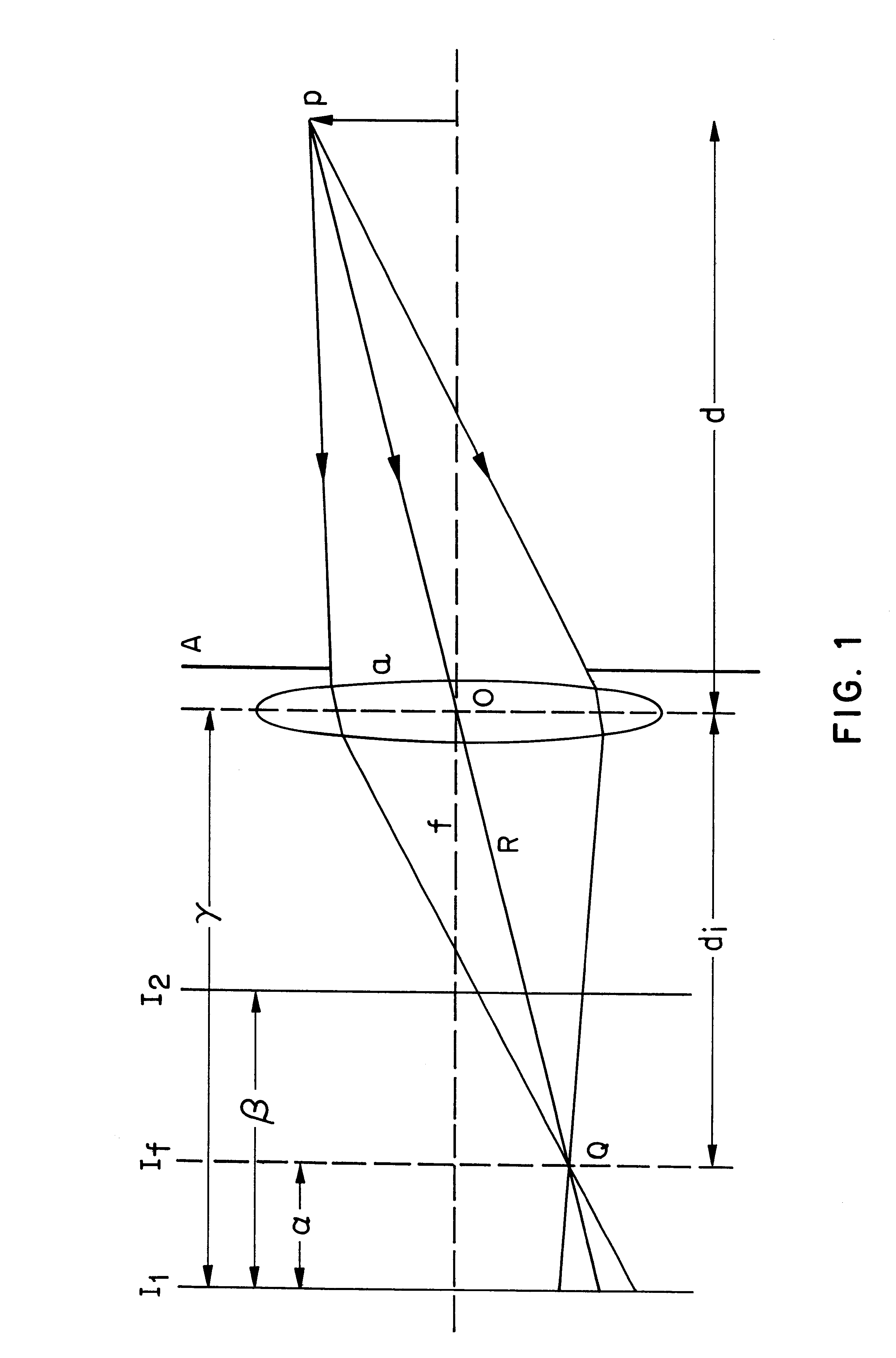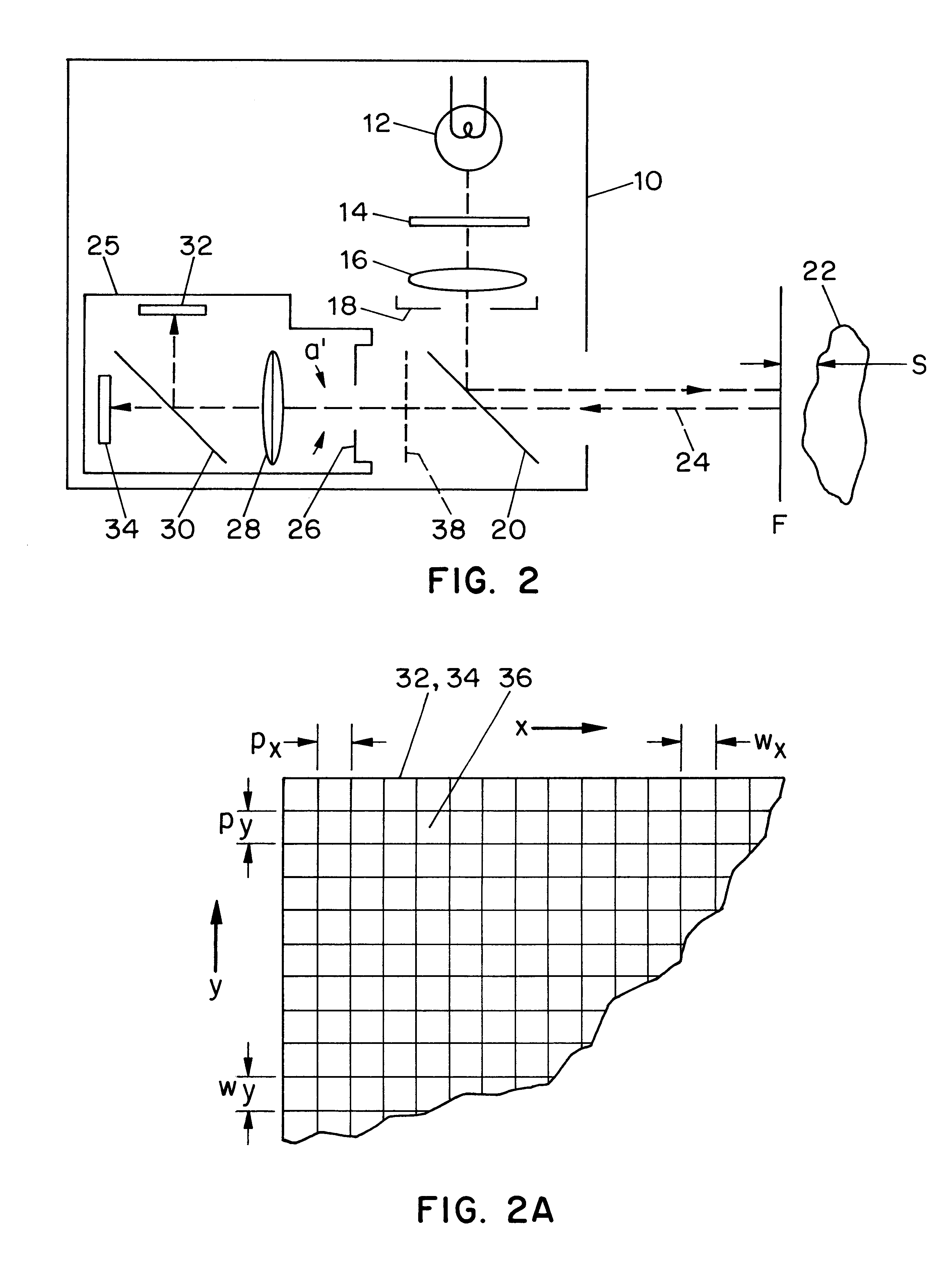Apparatus and methods for determining the three-dimensional shape of an object using active illumination and relative blurring in two images due to defocus
a technology of three-dimensional shape and object, applied in the field of three-dimensional structure or object mapping from two-dimensional images, can solve the problem that the recovery of three-dimensional measurements of a structure, still under investigation, cannot serve as stand-alone approaches
- Summary
- Abstract
- Description
- Claims
- Application Information
AI Technical Summary
Problems solved by technology
Method used
Image
Examples
Embodiment Construction
One variation of the sensor 10 addresses the fact that the defocus effect is a function of the chromatic content of the illuminating light. Most lenses have slightly different focal length for-different light wavelengths, accordingly, the accuracy of determination of depth from defocus can vary with the spectral characteristics of the illumination and the color of the reflecting surface of the object, since depth determination relies on prior knowledge of the focal length f of lens 28. This source of error can be avoided by providing a spectral band-pass filter 38, shown in FIG. 2, to allow only certain elements of reflected light to be imaged. A band-pass filter would limit the range of the wavelengths to be imaged and thereby limit the chromatic variation in the focal length of the lens. Other possible locations for such a filter are shown in FIG. 8 at 38', 38" and 38'".
In the case where the illumination source 12 is a laser, the filter is preferably narrow band, passing the laser...
PUM
 Login to View More
Login to View More Abstract
Description
Claims
Application Information
 Login to View More
Login to View More - R&D
- Intellectual Property
- Life Sciences
- Materials
- Tech Scout
- Unparalleled Data Quality
- Higher Quality Content
- 60% Fewer Hallucinations
Browse by: Latest US Patents, China's latest patents, Technical Efficacy Thesaurus, Application Domain, Technology Topic, Popular Technical Reports.
© 2025 PatSnap. All rights reserved.Legal|Privacy policy|Modern Slavery Act Transparency Statement|Sitemap|About US| Contact US: help@patsnap.com



